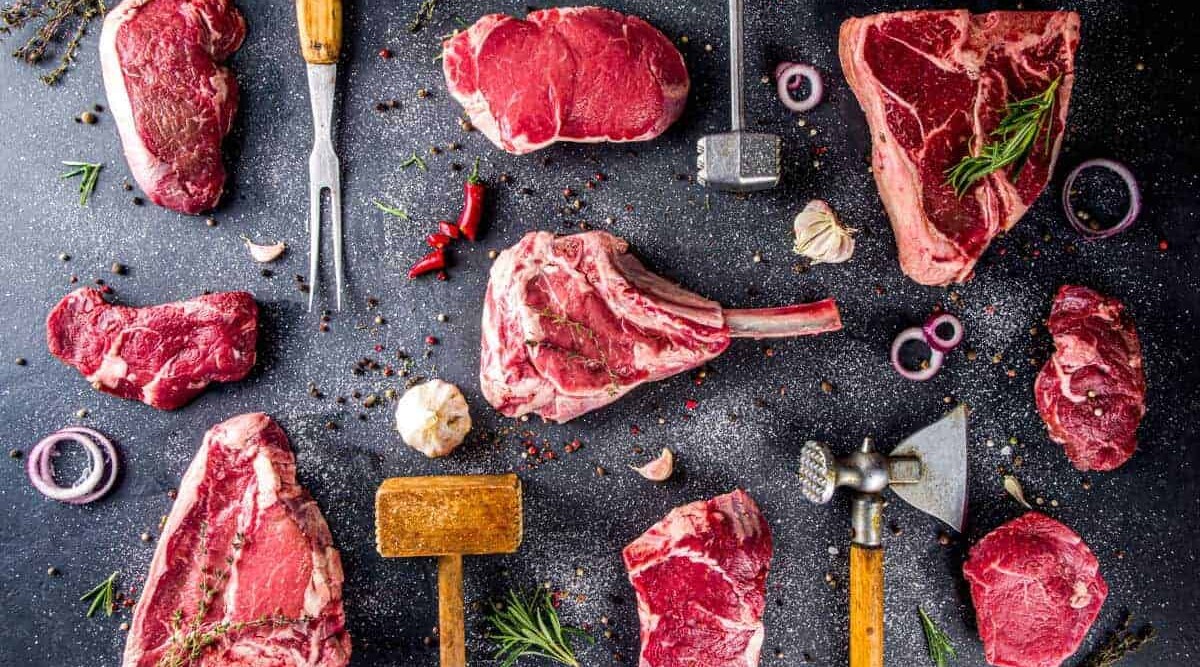
In this guide, we’re going to run you through not just 5, not even only 10, but the 11 best steaks for grilling!
There are many lists of the very best 5 or 6, which we already know and see on all the supermarket shelves. But there are some absolutely superb, slightly lesser-known cuts that we feel you absolutely must try too!
Not only that, but we will tell you how best to grill them, using what method(s), and we have also scoured the web to find 2 of the very best BBQ recipes around for each steak.
You can thank us in the comments later!
For these 11 best steak cuts for grilling, we’ll run you through what they are, where they come from on the cow, their flavor profile, tenderness and fat content, and approximately how much they cost.
We’ll also tell you exactly why they have made this list, so you can choose which steaks you think will make your top list too!
The Eleven Best Steaks For Grilling
So, in no particular order, let’s find out which steaks made our list!
1. Ribeye
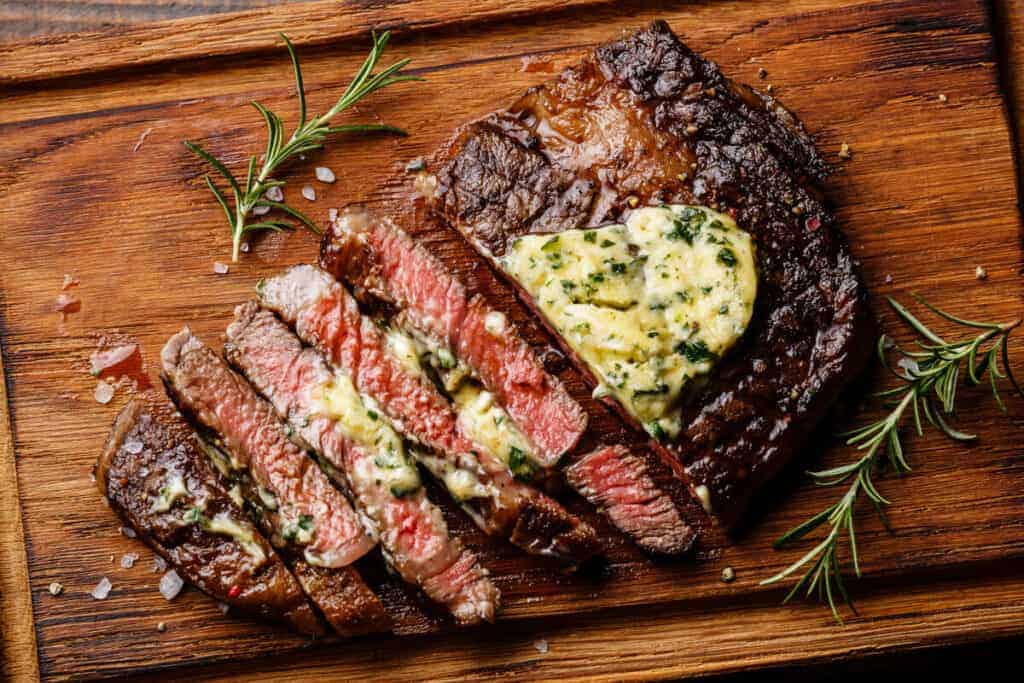
From which primal: Rib
Up there among the steak stars, the ribeye is commonly cited in the top three best steaks known to man and considered the very best by many.
It’s from the longissimus dorsi muscle, under the backbone’s front section where it is used for supporting the animal. Because it comes from the rib primal, it delivers intensely rich beefy flavors thanks to its incredible marbling, which adds intense flavor.
It’s great for grilling because the intramuscular fat ensures it stays moist and tender, and the plentiful flavor means you can simply season the steak and then grill it. No need to brine, marinade, or any further prep necessary — it stands up just great on its own.
You can purchase it bone out or in, which is then when it’s usually called a cowboy steak or a tomahawk if it has the entire rib still attached.
Best cut to between 1 ½ and 2 inches thick and 9 to 16oz in weight, this steak is great when seared-hot and fast on the grill for 3 to 4 minutes on each side and finished off on the cooler side.
Best served between medium-rare to medium, rather than rare, because of the sometimes thick veins of fat running through it, you want to take it a little higher to avoid serving raw lumps of internal fat.
At the time of writing, a standard ribeye steak varies from $23 to 30 per lb. Across online outlets.
Two ribeye recipes from around the web:
2. New York Strip
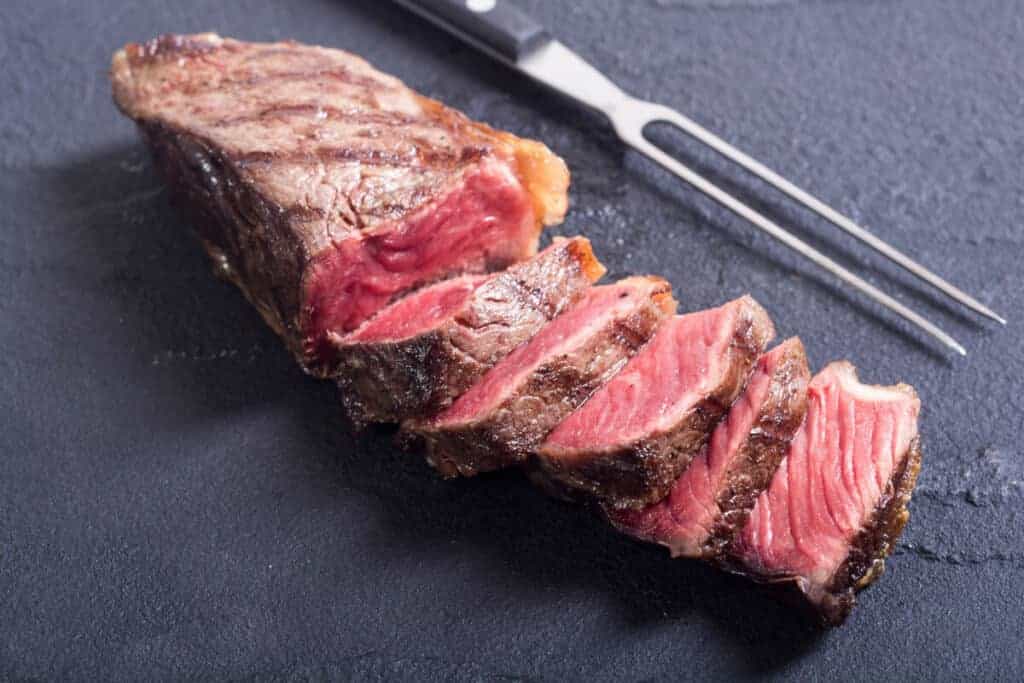
From which primal: Loin
This mighty steak, typically referred to as the New York strip steak because it’s popular there, is incredibly tender and lean. From the longissimus dorsi, the same muscle as the ribeye, it has gently visible marbling throughout.
Because it has less marbling compared to the ribeye, it’s not quite as flavorful but is slightly more tender.
Thankfully though, in addition to the slight marbling, it has a thin fat cap on one side which provides it with a delicate buttery flavor that gives it a fantastic beefy balance making it popular.
Commonly known as the strip steak, this cut has a few other names, such as the strip loin in Canada and Kansas City strip steak in … Kansas City, where they prefer the bone left in.
At the time of writing, the New York strip’s cost is between $20 and $40 per lb. Across online meat markets. Usually presented without the bone, one New York strip will typically weigh 12oz to 14oz and will be 1.5 to 2 inches thick, which is about the best thickness for steak.
This guy does well grilled hot and fast, seared each side for 2 to 3 minutes, before finishing off indirect until rare to medium-rare throughout.
Two NY strip steak recipes from around the web:
3. Porterhouse
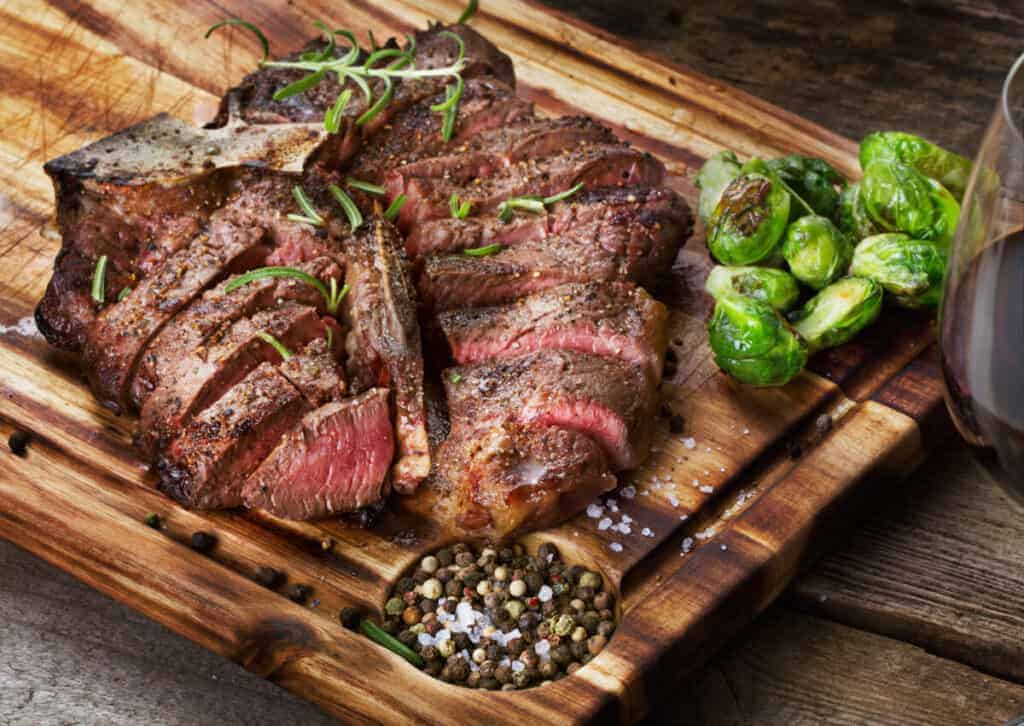
From which primal: Loin
Now to the porterhouse, which, as discussed in more detail in our article on porterhouse vs t bone, is like the T-bone but his bigger brother, it’s also referred to as the king steak!
It’s from the loin primal, cut towards the back end of the primal which is why it’s bigger and contains more filet than the smaller T-Bone. It has a T shaped bone through the middle, with the strip steak to one side, and the fillet mignon to the other side.
The tenderloin being much larger in a porterhouse is what differentiates it from the T-bone.
In tenderness, flavor, marbling, and fat content, it offers the best of both steak world’s which is why it’s fantastic for the BBQ.
In a porterhouse, the filet mignon portion MUST be in excess of 1.25 inches thick from the bone across the widest part. In a ‘standard T-bone,’ the filet will be any width under 1.25 inches.
Weighing in from 18oz anywhere up to 40oz, this steak is to be shared, unless you have an incredible appetite! The porterhouse’s cost is $40 to $50 per lb. At the time of writing.
To cook a porterhouse well is somewhat difficult, because you have 2 different steaks to contend with that do well at different doneness levels.
The strip steak side is best done medium-rare, whereas the filet side is best cooked only to rare.
To accomplish, the best way to cook it is to make sure the steak is AT LEAST 1.5 inches thick, 2 inches preferably, and to use the reverse sear method, brining the internal temperature up to approximately 118 F.
Place the filet side furthest away from the heat, so it cooks a little slower. When the strip side has reached 118F throughout, it’s then time to crank up the heat for a sear to finish…and this is where your skill comes in.
You want to sear the whole steak, both sides of the filet and the strip, but all the while balancing the steak between mostly over the direct heat but sometimes the filet side off the direct heat, just off to the side.
This will make the strip side cook slightly quicker and reach 5F hotter than the filet side, which is the ultimate goal. You want to serve the filet side at approx. 125F and the strip side at approx. 130F.
With practice, you’ll nail it!
Learn more in our detailed and dedicated guide to this cut, what is porterhouse steak?
Two porterhouse recipes from around the web:
- Grilled porterhouse steak with paprika & Parmesan butter
- Grilled porterhouse steaks with garlic & herb peppercorn crust
4. T-Bone
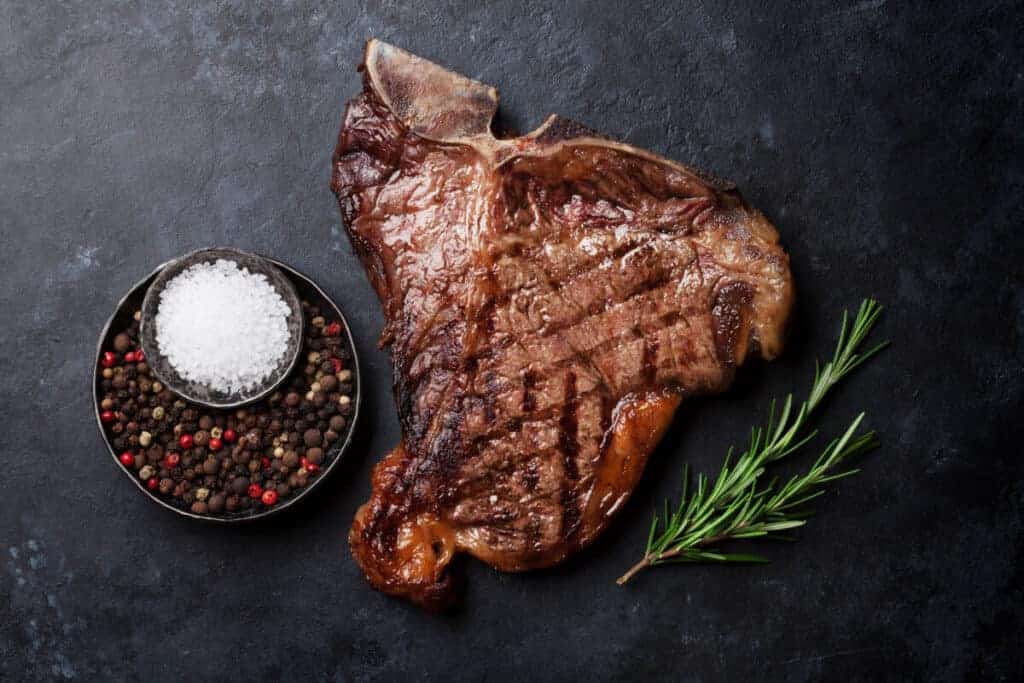
From which primal: Loin
From the loin primal and essentially just a smaller porterhouse steak, the T-bone finds himself among the big boy steaks, and only those with a large appetite should tackle it alone.
Named because the bone that runs along the middle is shaped like the letter T, it’s essentially two steaks in one.
Often confused with the porterhouse, the T-bone is cut closer to the front of the loin primal, and as such, it has a smaller portion of the tenderloin — under 1.25 inches wide, as opposed to over 1.25 inches wide in the porterhouse.
The tenderloin is incredibly tender, the most tender of them all, and the strip side offers much more flavor.
At the time of writing the cost of the T-bone costs between $30 and $46 per lb.
As it’s essentially two different steaks it can be difficult to cook it correctly, with the tenderloin cooking quicker than the strip side, so be sure to stick to recipe instructions — and read my tips for grilling it written for the porterhouse, number 3 in this list.
But to recap, the T-bone steak is best cooked using the reverse sear method, just be sure to position the tenderloin side of the T-bone the furthest away from the heat source to achieve the different temperature finishes you want in both steaks.
Two T-bone recipes from around the web:
5. Filet Mignon
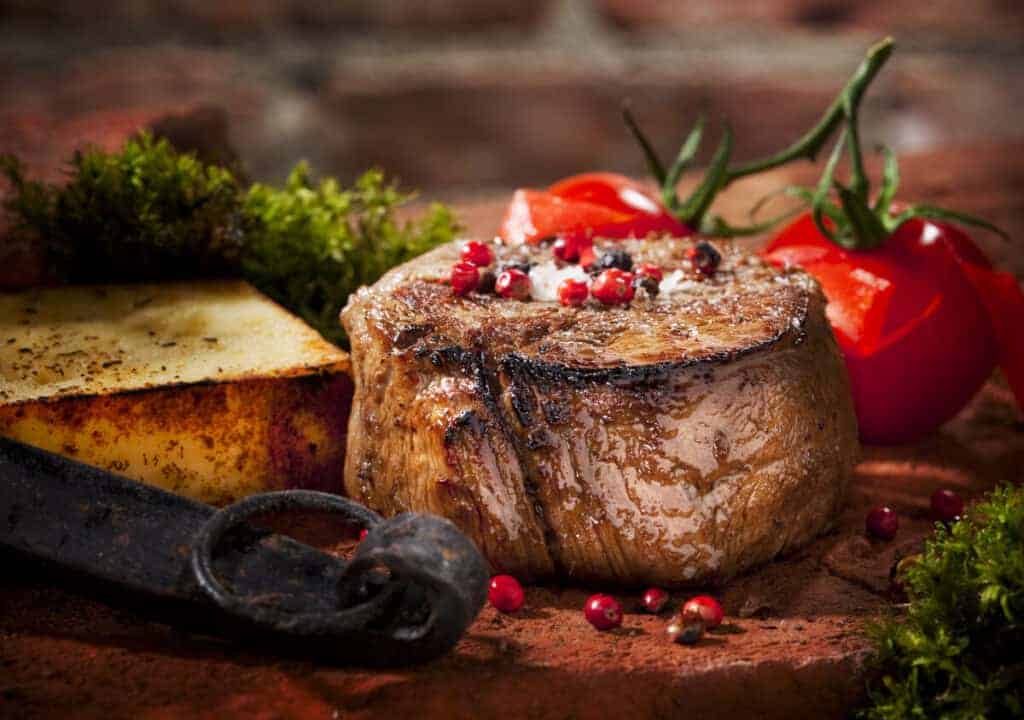
From which primal: Loin
Also known as the tenderloin steak, this is the most succulent and tender steak found within the cow. This extreme tenderness coupled with the smokey char of the BBQ makes for a mind-blowing mignon experience!
It’s lean yet so delicately succulent, offering a rich buttery melt in your mouth flavor. Because of where it’s positioned it gets little to no exercise, which is why it’s so tender, and the muscle itself is known as the psoas major.
It has the slightest of marbling, often with two or three thin veins of fat running across the steak, and no other visible fat. For this reason, it’s sometimes presented wrapped in bacon to help keep it moist during the cooking or grilling process.
Your butcher will cut this steak around 2 to 2 ½ inches thick, and it will usually weigh around 4oz to 7oz.
They will grill well using the hot and fast method, either a standard sear then finish low, or a reverse sear. The choice is yours, though I would go reverse for a more accurate rare throughout. And ‘chefs preferred temp’ is rare for the filet.
Its tenderness and the fact that each steer only provides 2 to 3 filet mignon steaks, means it’s a highly prized, highly priced cut.
At the time of writing, the filet mignon costs $30 to $40 per lb.
Two filet recipes from around the web:
6. Picanha
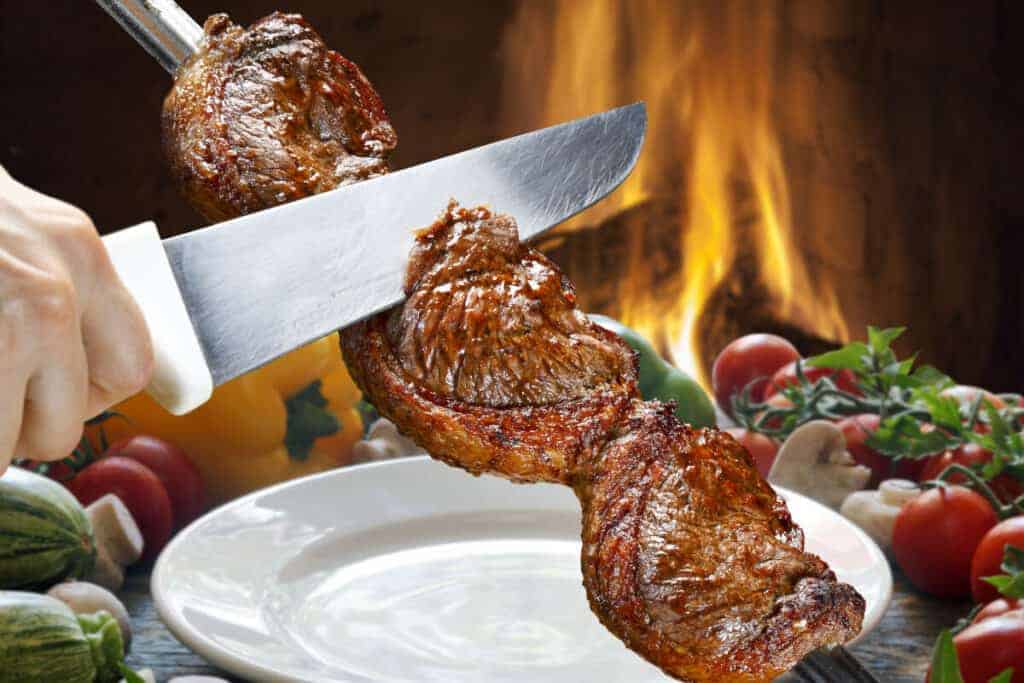
From which primal: Sirloin
This is somewhat a newcomer in the steak world, and this tasty little number is the very top of the top sirloin steak.
It’s typically half meat and half fat cap and is a favorite in South America. The rest of the world is now slowly realizing just how amazing they are.
As discussed in our dedicated guide, what is picanha? They are also called sirloin cap, rump cap, or rump cover outside of South America.
The meat has little marbling and is actually quite lean, but the succulent fat cap is the star of the show here. Providing a creamy buttery flavor, it creates a melt in your mouth texture that everyone will love.
This is a fantastic steak for grilling because the intensely deep flavor it will get everyone talking, and also because they are hard to ruin thanks to the fat cap.
For picanha steaks, I personally prefer a sear first, then finish low. This is because you really want to hit the fat cap hard with heat, to render it out and make it palatable. Searing first ensures you will be able to do this without fear of overcooking the inside.
So salt the fat cap HEAVILY, sear both sides until you get the crust you want, then sear it stood up with the fat toward the heat to give that extra time to render and crisp, before the whole thing to indirect heat to finish at a good 130 F.
When serving, make double sure you cut against the grain! Cut this way, it’s nice and tender. Cut with the grain, and the mouthfeel is very chewy. You’ve been warned!
At the time of writing, these guys cost between $20 and $30 per lb, and it will weigh between 2 and 2 ½ lb, which is then cut up into several steaks.
Anything over this weight and it’s not a picanha, and you’ll find some not-so-great meat attached.
Two picanha recipes from around the web:
7. Flat Iron
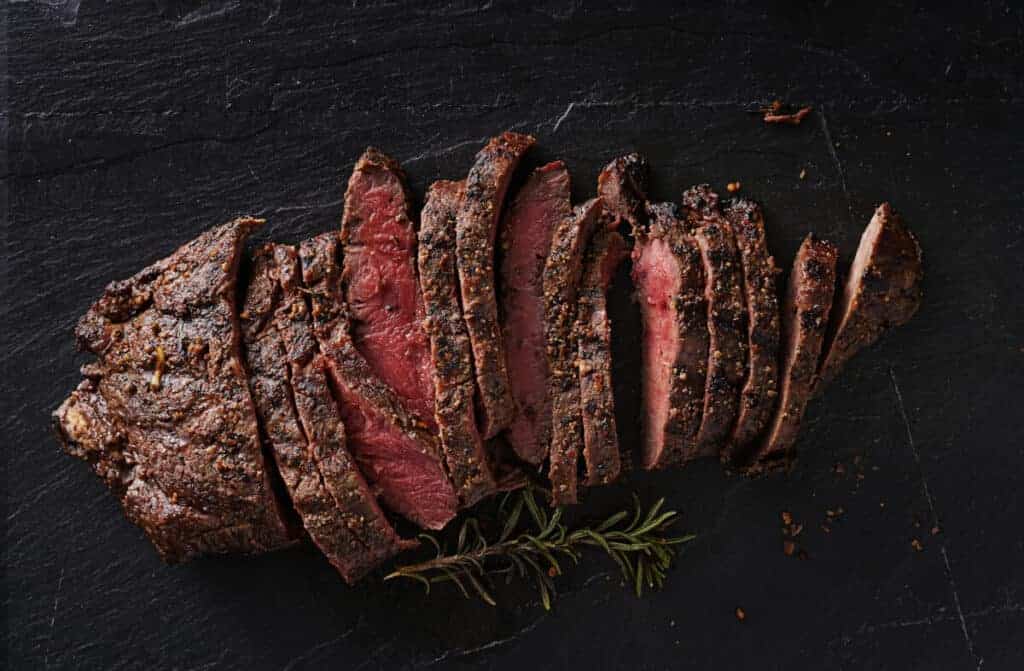
From which primal: Chuck
The flat iron is another up and coming steak that offers both tenderness and flavor rolled into one cut and takes a flat iron shape.
Found deep within the top blade roast it’s a strenuously worked muscle, and until recently, it was thought to be a tough cut.
But when it was discovered that by cutting along the connective tissue, creating the flat iron on one side and the top blade steak on the other, it was super tender (surprisingly the second most tender cut, after the filet mignon!)
Full of marbling, it’s typically 8oz in weight and cut around 1 inch thick. But because it’s cut quite thin, it can be easy to overcook it on the BBQ, so be sure to keep your eye on it while it’s grilling.
Best seasoned simply, grilled hot and fats, searing all the way through the cook. It’s so thin there’s no need to finish it low. Just grill HOT until you get a good sear and the internal temp is to your desired doneness.
At the time of writing, because it’s relatively unknown compared to traditional cuts, the flat iron steak is priced between $22 and $30 per lb.
Its combination of tenderness and flavor and the attractive price make it perfect for the large family BBQ.
Two flat iron recipes from around the web:
8. Hanger Steak
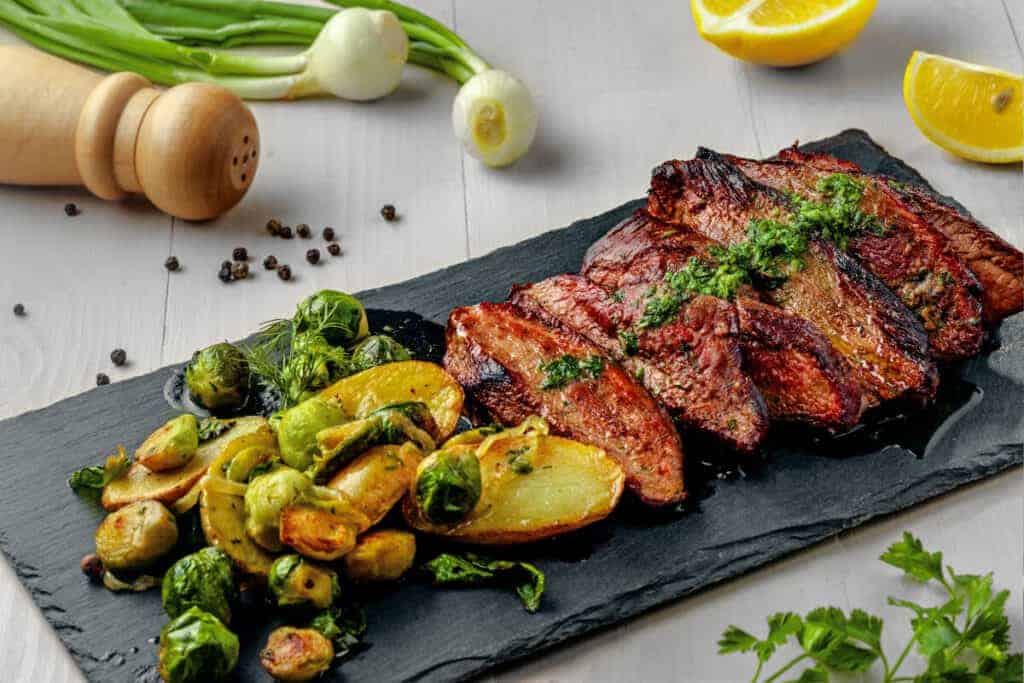
From which primal: Plate
As discussed in our guide, what is hanger steak? This steak is another relatively unknown steak that was discovered only recently.
Called as such because it hangs from the diaphragm of the cow along its lower belly by the kidneys. For this reason, it’s hardly worked creating another incredibly tender steak which is scouted as one of the most tender.
Also known as the butcher’s steak (because they liked to keep it for themselves) it’s full of intense beefy flavor and marbling and has a somewhat coarse, striated muscle fiber texture compared to other steaks.
It also has an inedible membrane that runs through the middle of it, which you’ll have to cut around and remove.
Because of this membrane, and because it’s relatively unknown until now, it’s rather cheap as far as beef goes. At the time of writing it costs between $13 and $25 per lb.
But if your guests love flavor and tenderness (and they are happy to work around the membrane) it’s a great contender for grilling en masse.
If you overcook this steak, it will become incredibly tough! So for best results, cook it hot and fast, with no time needed low and indirect.
Season it simply, grill it direct, and once you hit a few degrees under your desired serving temp, take it off and rest it for a good 7 to 10 minutes.
It will carryover cook to finish off during this time and resting your steak will help to lose less moisture when you slice it.
And hey, I know some people like their steak medium or even well done, but do not go past medium-rare with this one. It will simply become too tough.
And to achieve maximum tenderness slice it against the grain. This is essential to it will be stringy!
Two hanger steak recipes from around the web:
9. Flank Steak
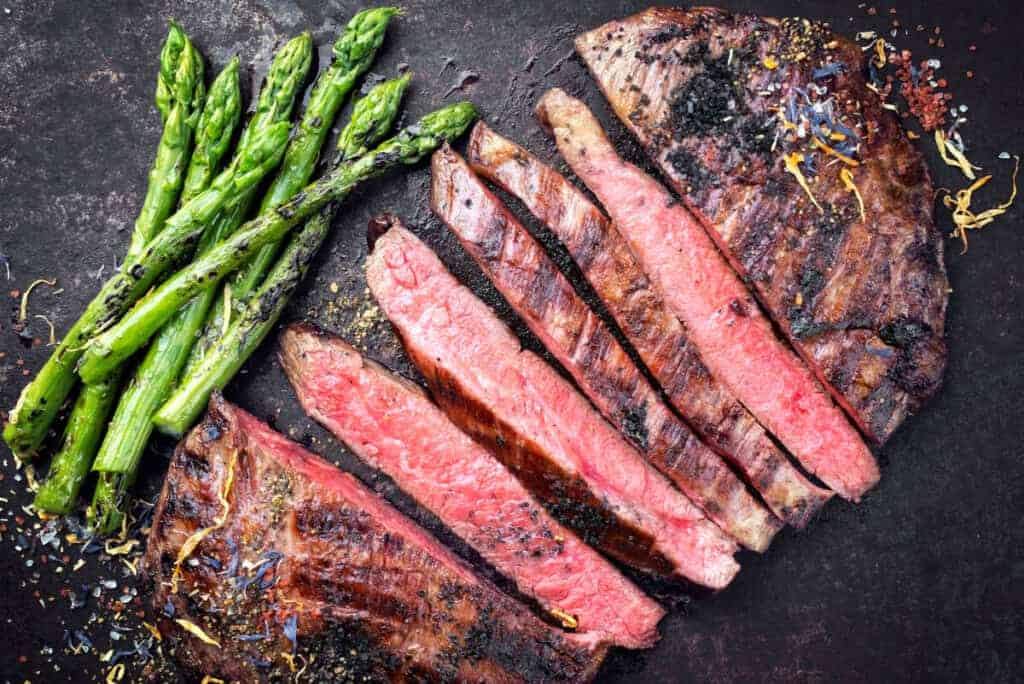
From which primal: Flank
Named as such because this is the steak cut from the flank primal, nothing clandestine here!
It’s a long and flat cut which is trimmed of all the fat, and as such it’s very lean. You may also know of this steak as the London broil or bavette in France.
It’s quite a tough cut, potentially the toughest of all, so it would benefit from a good marinade for at least a few hours for grilling (if not overnight, if you can!) to tenderize the meat and soak up that extra flavor.
Despite being tough it’s full of flavor and prized by chefs around the world.
At the time of writing, the flank steak costs between $30 and $33 per lb., from various online meat markets.
This steak is great for grilling as it’s packed with flavor and can be used as a canvas on which to play with other flavors in your marinades.
So, once you’ve learned how to grill this steak, I guarantee it will be one of your favorite cuts. It’s great for the grill as a new BBQ steak experiment.
Just like the other thinner and coarser steaks on this list, be sure to chuck it on a highly heated grill quickly, on and off, no mucking around or time in low indirect heat!
Slice the flank steak against the grain for maximum tenderness.
Two flank steak recipes from around the web:
10. Skirt Steak
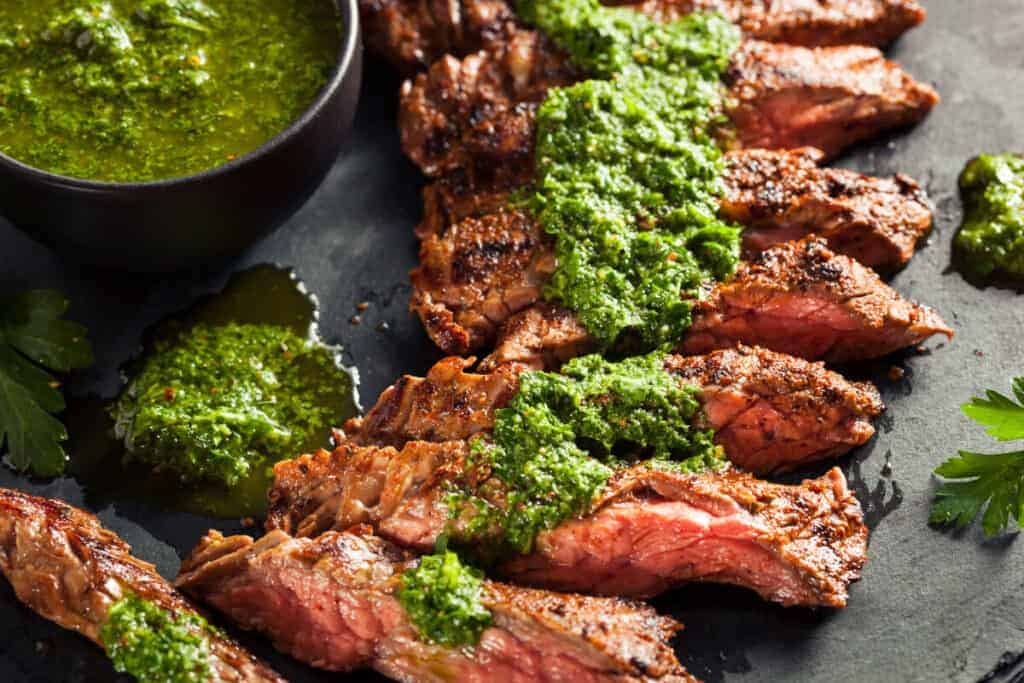
From which primal: Plate
This cut is commonly used in fajitas, so if you’ve ever had them in a restaurant, then you’ve probably had the skirt steak.
It sits just under the rib primal and comes as either an inside skirt or outside skirt. The inside is thinner and shrinks a lot when cooked, and the outside is thicker and generally more presentable, but they are both super tasty.
It has a unique taste that is luxuriously rich and intense, with some comparing it to the richer taste of liver, but with the delicious consistency of steak.
It has an open grain consistency, so it’s very susceptible to a good marinade, which makes it great for the BBQ and all the rubs and marinades.
At the time of writing this cheap cut of beef is priced between $14 and $24 per lb. It typically weighs anywhere between 1 and 2lbs, so you can be sure to get a few servings out of this steak.
This is one of the longest cuts, measuring 20 to 24 inches long, and it’s also thin, so it does best when cooked hot and fast and a medium-rare finish is ideal for this steak.
Two skirt steak recipes from around the web:
- Grilled skirt steak with a Worcestershire sauce marinade
- Grilled skirt steak with a creamy citrus sauce
11. Top Sirloin

From which primal: Sirloin
The top sirloin steak is also known as the sirloin steak, and it comes from the top sirloin butt which is why some people add the top to its name.
While it’s not one of the most tender of cuts, it’s very popular because it offers a great balance of everything we love about steak, which is why you can be sure that it will be on almost every restaurant menu out there.
It’s very lean with little marbling and next to no fat within the steak itself. It has the smallest of fat caps, which delivers an almost creamy flavor to the meat. It’s this cap that makes the picanha described above.
It’s a versatile cut, which makes it great for the grill because whatever recipes you have in mind, or if you have a fussy family member, you know the top sirloin can take whatever you chuck at it.
At the time of writing, the top sirloin costs between $18 and $28 per lb. dependent on the online meat market you purchase from.
This steak you can sear first, finish low if under 1.5 inches thick, or reverse sear if over 1.5 inches, aiming for medium-rare as the finished result.
Learn more in our dedicated guide, what is sirloin steak?
Two top sirloin recipes from around the web:
Grilling Methods for Steak Cuts
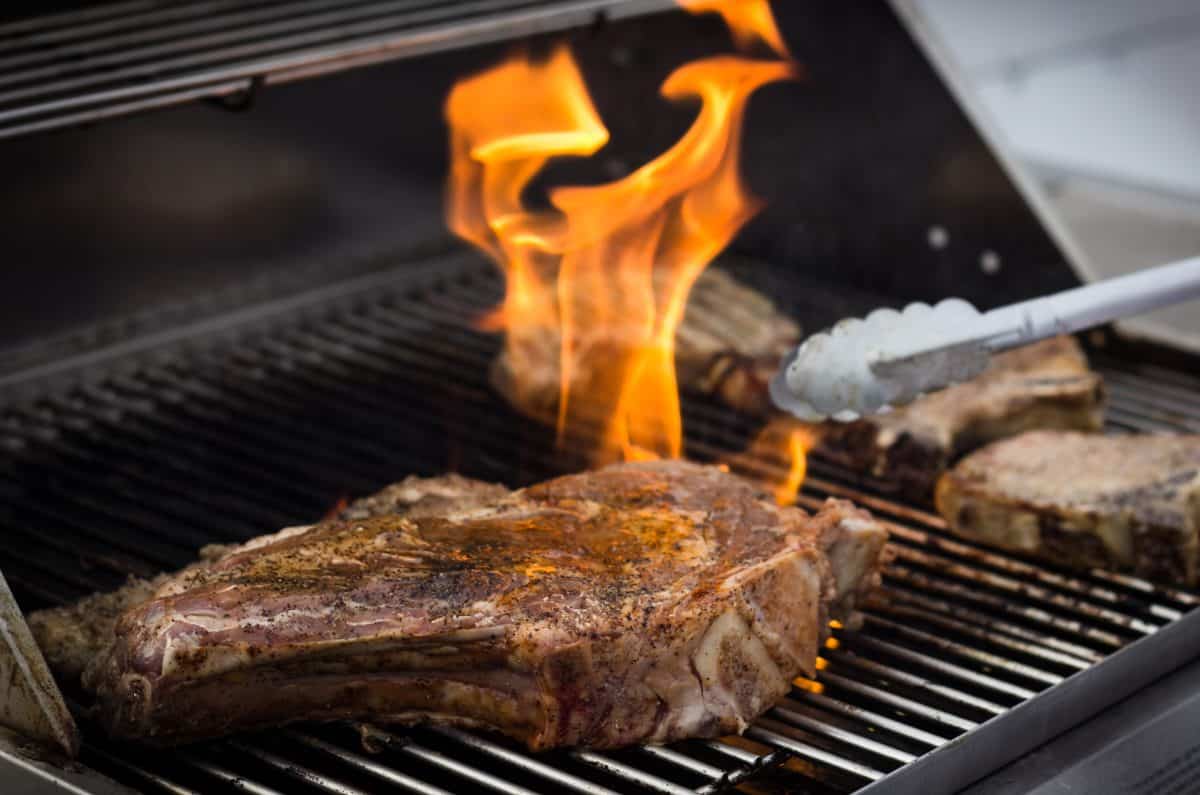
While many of you already know how to use your grill, it’s always good to remind ourselves of the basics.
Two grilling methods are commonly used for steak, both of which I suggest you take some time to learn and practice before setting yourself loose on an expensive cut.
Always Set up for Two-Zone Cooking When Grilling Steaks
Depending on your steak’s thickness, the time it takes to cook it through can vary tremendously.
Now, for any steak you grill, you’ll want to create a beautiful, dark crust by searing it hot and fast. All that dark brown coloring is extra amazing flavor created by the Maillard reaction.
If you don’t get a good, dark sear, you are missing out on bundles of flavor. So you MUST sear your steak with a screaming hot grill.
However, if you cook anything but the thinnest of steaks all the way through hot and fast, you will severely burn the outside and ruin it before the inside has even cooked.
So you need to grill your steak in 2 stages:
- Hot and fast searing over direct radiant heat — to get a good Maillard crust for added flavor.
- Slowly over indirect heat — to slowly cook it through to the center, without burning the outside.
So you need to set up your grill as a two-zone cooker.
You want to bank all your charcoal to one side of your grill, so you have a very high heat direct radiant side for searing.
Then you want the remaining half of your grill set up with no coals so that you can place your steak away from the heat source.
This indirect cool zone will cook the steak far slower until perfectly done throughout while removing the chance of burning (much like putting it in a slow oven, as you see the TV chefs do.)
If you have a gas grill, have a burner on for the high heat zone and a burner off for the cooler side — same thing.
Now, you can sear first, then finish low. Or you can cook it low, then finish with a sear — also known as the ‘reverse sear’ method.
So which method should you use, and why?
Steaks Under 1.5 Inches Thick — Sear First and Finish Low
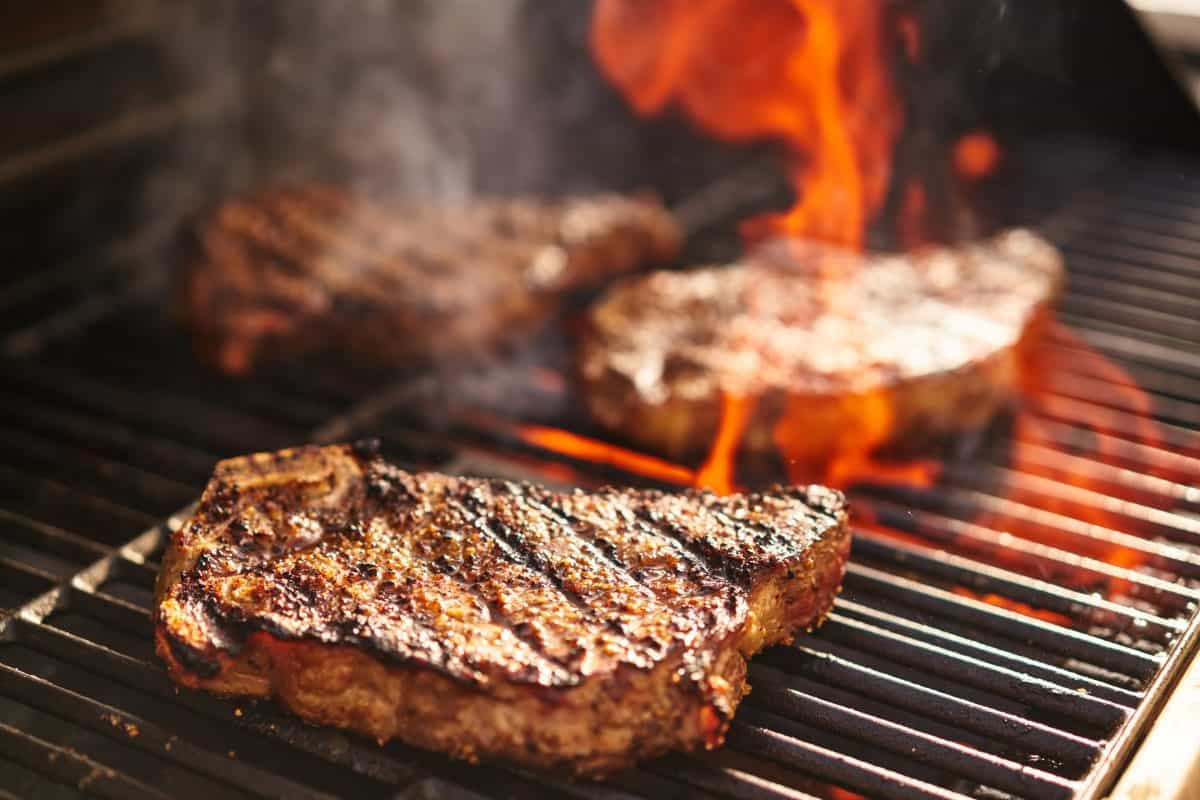
This is the traditional way of cooking steaks, and my recommendation is:
For ANY steak under 1.5-inches thick, sear first, then finish it low. DO NOT use the reverse sear method.
Steaks under 1.5-inch thick cook through very quickly. If you cook them slow first, then sear after, you have a very high risk of raising the internal temperature too high before searing, leaving too little margin to get a good sear without overcooking the center.
This can result in one of two scenarios:
Either your steak is perfectly medium-rare throughout, but with hardly any sear — or — you have a great sear but had to overcook the center, taking it to well done or worse.
It’s all too easy to overshoot your target finished temp or overcook the center if you sear to finish after bringing the center up to temp with thinner steaks.
So for thin steaks, get your sear first, set that right, then finish it low. You have more control, and your success rate will be far higher than the reverse sear method.
Steaks Over 1.5 Inches Thick — Reverse Sear Method of Start it Low, Finish with a Sear
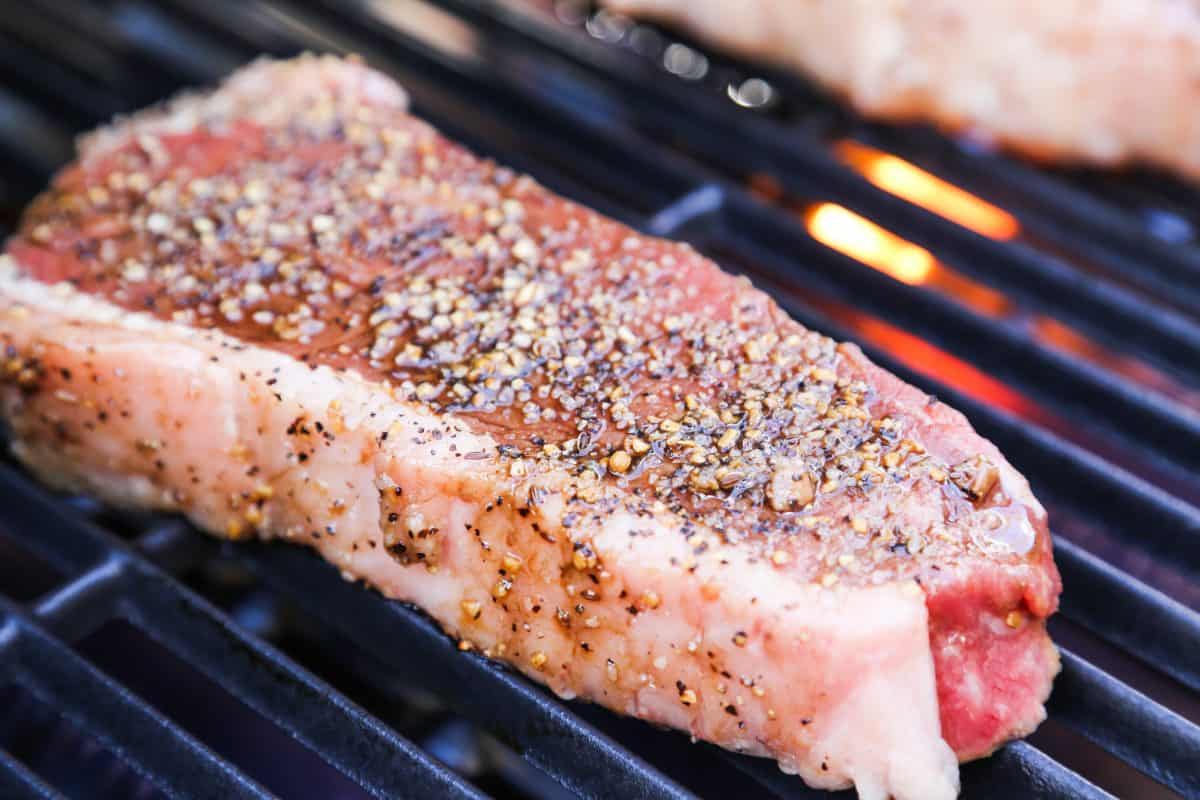
For any steak over 1.5 inches thick, the reverse sear method is fantastic. It is arguably — and believe me, people do argue it a lot! Lol — the best way to cook thicker steaks.
The reverse sear method is so named because it flips the traditional way back to front:
Reverse searing is where you cook the steak low and slow until it’s 10 or so degrees Fahrenheit below the perfect temperature throughout, and then sear it to finish.
This method is good because the more gently you cook a piece of meat, the more evenly it cooks. So reverse searing, bringing it up to temp slowly, then searing hot at the end, results in a perfectly done steak throughout, with a very thin Maillard crust.
With thick steaks that you sear first, then finish slow, you tend to end up with a few mm of crust on the outside, then a few mm of well-done steak, a few mm of medium-well steak…and so on, until a ‘bullseye’ medium-rare center. A good portion of the outside layer is overcooked.
Reverse seared steaks are perfect doneness edge to edge, with a good crust. Brilliant!
So, in conclusion:
Steaks 1.5-inches and under you should sear first, finish low. Steaks over 1.5-inches thick, use the reverse sear method.
OK, so with that out of the way, let’s now look at the best 11 steaks for grilling.
Final Thoughts
So there you have it, the very best steaks for grilling!
All them do well being grilled hot and fast, with the larger steaks, and picanhas, preferring the reverse sear method.
Remember to keep an eye on those extra thin steaks, and their positioning if they aren’t uniform in shape or texture.
Whichever steaks you try first, make sure you have fun and experiment with the different recipes we’ve provided.
Let us know in the comments below which steaks make your top 3 and why! We would love to share your stories, BBQ knowledge, and tips with our avid readers.
Happy grilling, friends!


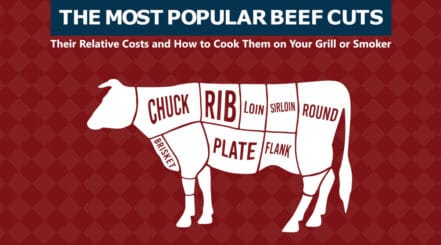
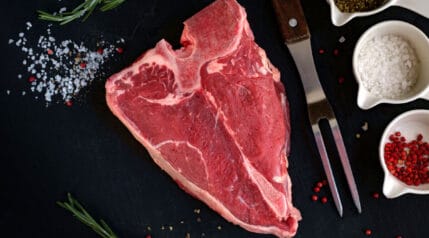

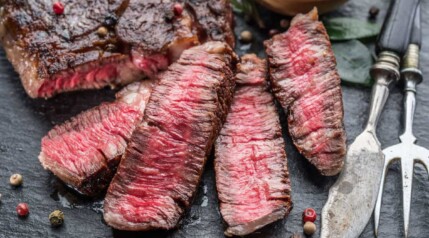
Thanks, Mark for the in-depth way to cook a steak you are the bomb
Thanks, James. Always nice to hear people find our content useful 🙂
Great read! Thanks, for the tips!